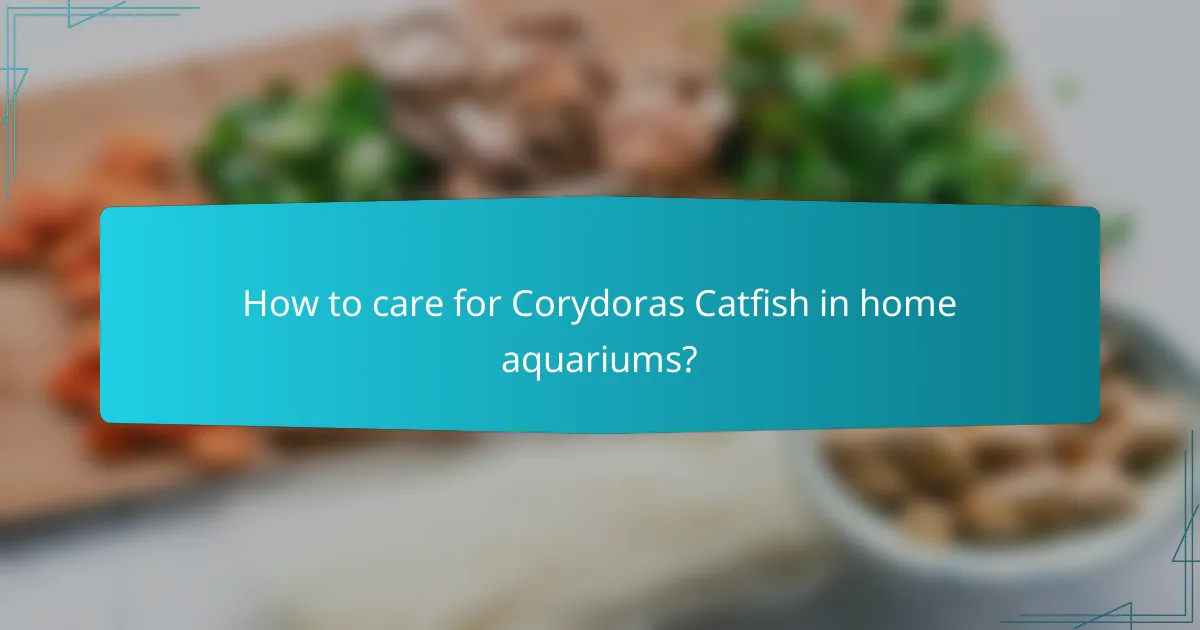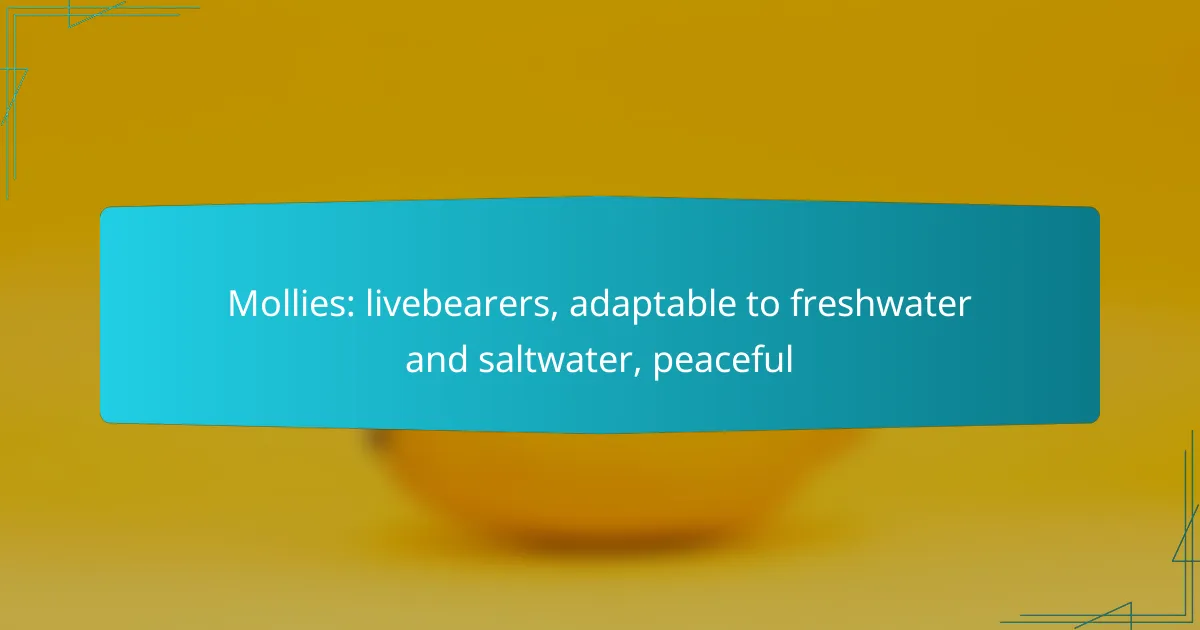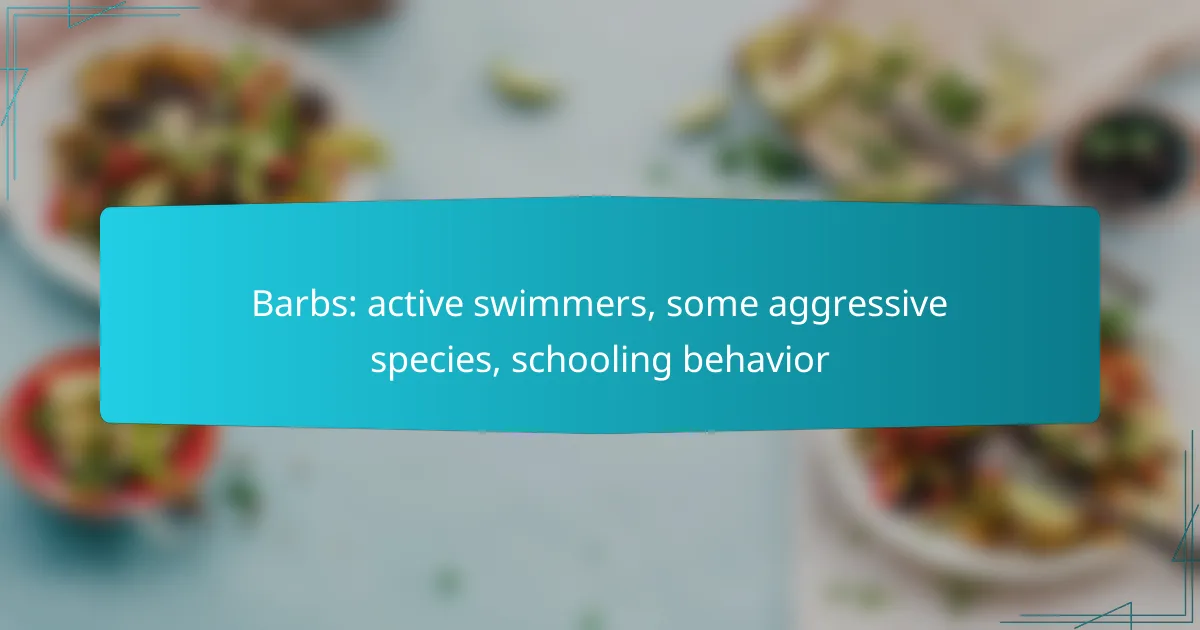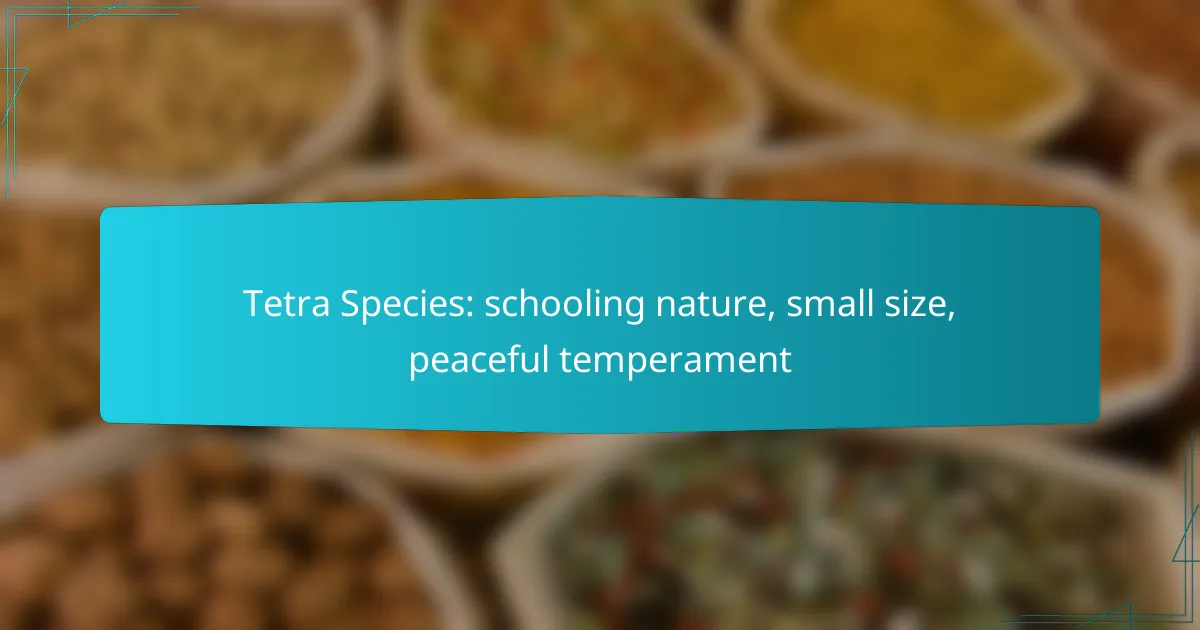Corydoras catfish are charming bottom dwellers known for their social nature and algae-eating habits, making them a popular choice for home aquariums. These hardy fish thrive in groups and contribute to a balanced ecosystem by cleaning the substrate and controlling algae growth. With proper care and compatible tank mates, Corydoras can enhance both the beauty and health of your aquarium.

How to care for Corydoras Catfish in home aquariums?
Corydoras Catfish require specific care to thrive in home aquariums. Providing the right environment, compatible tank mates, proper feeding, and maintaining water quality are essential for their health and well-being.
Optimal tank conditions
Corydoras Catfish thrive in a well-maintained aquarium with a minimum size of 20 gallons. They prefer a sandy substrate to protect their sensitive barbels and enjoy plenty of hiding spots, such as plants and caves.
Maintain a temperature range of 22-28°C (72-82°F) and a pH level between 6.0 and 7.5. Regular water changes and a good filtration system will help keep the environment stable and healthy.
Compatible tank mates
Corydoras Catfish are peaceful and social fish, making them suitable for community tanks. They do well with other non-aggressive species like tetras, guppies, and rasboras.
Avoid keeping them with larger or aggressive fish that may bully or eat them. It’s best to keep them in groups of at least five to ensure they feel secure and exhibit natural behaviors.
Feeding guidelines
Corydoras Catfish are omnivores and enjoy a varied diet. Offer high-quality sinking pellets, frozen or live foods such as bloodworms, and occasional vegetable matter like blanched zucchini or spinach.
Feed them small amounts 1-2 times a day, ensuring they consume the food within a few minutes to prevent water quality issues. Monitor their eating habits to adjust portions as needed.
Water quality management
Maintaining good water quality is crucial for Corydoras Catfish. Regularly test the water for ammonia, nitrite, and nitrate levels, keeping ammonia and nitrite at 0 ppm and nitrates below 20 ppm.
Perform partial water changes of 20-30% weekly to help maintain optimal conditions. Use a quality water conditioner to remove harmful chemicals from tap water before adding it to the tank.

What are the best Corydoras species for beginners?
The best Corydoras species for beginners are those that are hardy, easy to care for, and social. Corydoras aeneus, Corydoras panda, and Corydoras sterbai are excellent choices, each offering unique characteristics that make them suitable for novice aquarists.
Corydoras aeneus
Corydoras aeneus, commonly known as the bronze cory, is one of the most popular species among beginners. This fish is resilient and can adapt to various water conditions, making it an ideal choice for new aquarium owners.
These catfish thrive in groups of at least six, as they are social creatures. They help keep the tank clean by scavenging for leftover food and algae, contributing to a healthier aquarium environment.
Corydoras panda
Corydoras panda, or panda cory, is easily recognizable due to its distinctive black and white markings. This species is peaceful and enjoys the company of its own kind, so it’s best to keep them in small schools of five or more.
Panda corys prefer slightly cooler water temperatures, typically between 22°C and 26°C (72°F to 79°F). They are also known for their playful behavior, often darting around the tank and exploring their surroundings.
Corydoras sterbai
Corydoras sterbai, known as the Sterba’s cory, features attractive patterns and is slightly larger than other Corydoras species. They are hardy and can tolerate a range of water conditions, making them suitable for beginners.
This species thrives in groups and is particularly active during the day. Providing a well-planted tank with hiding spots will encourage natural behaviors and help reduce stress among these social fish.

How do Corydoras Catfish contribute to aquarium health?
Corydoras catfish play a vital role in maintaining aquarium health by controlling algae growth, cleaning the substrate, and promoting social interactions among tank mates. Their behaviors and feeding habits help create a balanced ecosystem within the aquarium environment.
Algae control
Corydoras catfish are effective algae eaters, helping to manage algae levels in the aquarium. They graze on algae that grows on surfaces, which can prevent excessive buildup and keep the tank looking clean. Regular feeding of algae-based foods can also supplement their diet and enhance their algae-eating habits.
To maximize their algae control, consider keeping a group of at least five to six Corydoras, as they thrive in social settings and are more active when in a group. This increased activity can lead to more efficient algae consumption.
Bottom cleaning
As bottom dwellers, Corydoras catfish are excellent at cleaning the substrate of the aquarium. They sift through the gravel or sand, consuming leftover food and detritus, which helps maintain water quality. This behavior reduces the risk of harmful bacteria and toxins that can develop from decaying organic matter.
To ensure effective bottom cleaning, provide a substrate that is gentle on their barbels, such as fine sand. Avoid sharp-edged materials that could injure them and hinder their natural foraging behavior.
Social behavior benefits
Corydoras catfish are inherently social fish that thrive in groups, which enhances their overall well-being and contributes to a harmonious aquarium environment. Their social interactions can reduce stress levels, making them more active and healthier. Keeping them in groups of five or more can lead to more natural behaviors and a lively tank.
Additionally, their presence can encourage other fish to exhibit more natural behaviors, promoting a balanced community. Ensure that the tank has ample hiding spots and open swimming areas to accommodate their social nature and reduce territorial disputes among other species.

What are the common health issues in Corydoras Catfish?
Corydoras Catfish can experience several health issues, with some being more prevalent than others. Understanding these common problems can help in maintaining their well-being and ensuring a healthy aquarium environment.
Ich (white spot disease)
Ich, or white spot disease, is a common parasitic infection that affects Corydoras Catfish. It is characterized by small white cysts appearing on the skin and fins, often leading to scratching against objects in the tank.
To treat Ich, increase the water temperature gradually to around 28-30°C (82-86°F) and add a suitable anti-parasitic medication. Ensure that the treatment does not harm other tank inhabitants, as some medications can be harsh on sensitive species.
Fin rot
Fin rot is a bacterial infection that causes the fins of Corydoras Catfish to deteriorate, often appearing frayed or discolored. Poor water quality, stress, and injuries can contribute to this condition.
To prevent fin rot, maintain excellent water quality through regular changes and filtration. If fin rot occurs, treat with antibacterial medications and improve the tank’s environment to reduce stressors.
Swim bladder disease
Swim bladder disease affects the buoyancy of Corydoras Catfish, making it difficult for them to maintain their position in the water column. This condition can result from overfeeding, constipation, or infections.
To manage swim bladder disease, adjust the diet to include high-fiber foods and avoid overfeeding. If symptoms persist, consider consulting an aquarium professional for further diagnosis and treatment options.

How to breed Corydoras Catfish successfully?
Breeding Corydoras Catfish requires a well-prepared environment and proper conditioning of the fish. Focus on creating an ideal breeding tank and monitoring the health of the breeding pairs to ensure successful spawning.
Breeding tank setup
Set up a dedicated breeding tank that is at least 20 gallons (75 liters) to provide ample space for the fish. Use a soft substrate, such as fine sand, and include plenty of hiding spots with plants or decorations to mimic their natural habitat.
Maintain a temperature range of 24-28°C (75-82°F) and ensure good water quality with a gentle filtration system. Regular water changes will help keep the environment clean and stable, which is crucial for breeding success.
Conditioning pairs
Conditioning pairs involves feeding them a varied diet rich in protein, such as live or frozen foods like bloodworms and brine shrimp. This diet helps stimulate their reproductive behavior and prepares them for spawning.
Keep the breeding pairs in a separate tank for a few weeks, observing their interactions. Look for signs of readiness, such as increased activity and the males chasing the females. Once they are conditioned, they will be more likely to spawn successfully.
Egg care
After spawning, Corydoras will lay eggs on flat surfaces, such as leaves or glass. Remove the eggs to a separate hatching tank to protect them from being eaten by the parents. Maintain a stable temperature and gentle aeration to ensure healthy development.
The eggs typically hatch within 3-5 days, depending on the water temperature. Once the fry are free-swimming, feed them infusoria or finely crushed flakes until they grow large enough for larger foods. Regular water changes will help maintain a healthy environment for the growing fry.

What are the ideal water parameters for Corydoras Catfish?
The ideal water parameters for Corydoras Catfish include specific temperature, pH, and hardness levels that support their health and well-being. Maintaining these conditions ensures that these bottom-dwelling, social fish thrive in a community aquarium.
Temperature range
Corydoras Catfish prefer a temperature range of approximately 22°C to 28°C (72°F to 82°F). Keeping the water within this range promotes optimal activity and breeding conditions for these fish.
To maintain the ideal temperature, use a reliable aquarium heater and monitor the water with a thermometer. Sudden temperature fluctuations can stress the fish, so gradual adjustments are recommended.










